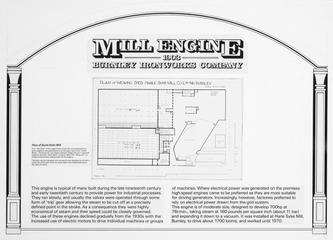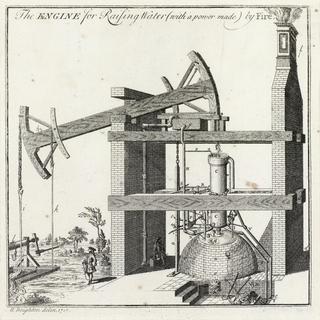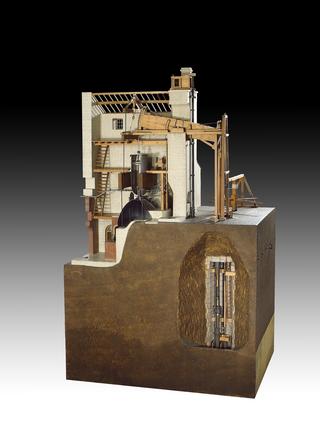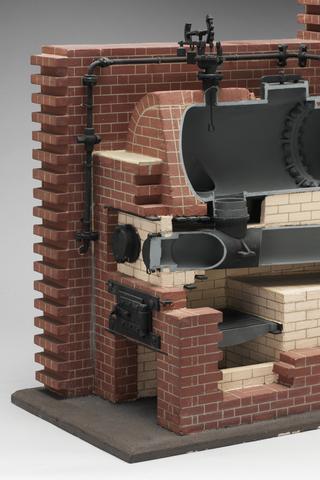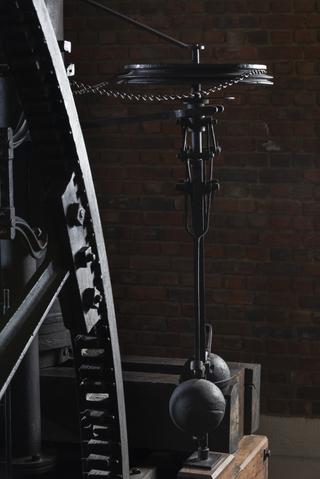
Four specimens illustrating the manufacture of a 7/8" diam. "Helicoid" Locknut
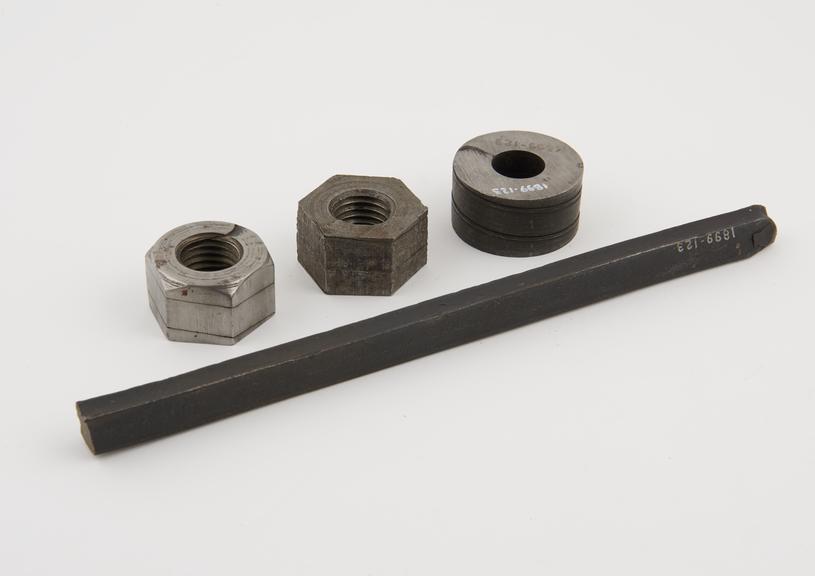
Four specimens illustrating the manufacture of a 7/8" diam. "Helicoid" Locknut viz: (a) Straight-steel bar 10" long; (b) Piece for nut cut off helix; (c) Piece for nut screwed and punched, hexagon; (d) Piece for nut chamfered and finished
These specimens show the construction and method of manufacture of an elastic nut patented by Mr. F. Mottershall in 1892. The nut consists of a short length of a closely wound helix which is tapped with a thread of slightly less pitch than that of the bolt it is to fit, so that screwing the nut on to the bolt causes the helix to lengthen and thus give a continuous grip for the purpose of preventing slacking back by vibration. The nuts are made from a mild steel bar of trapezoidal section, which is wound, while cold, as a left-handed helix upon a central mandril in a coiling machine resembling a lathe. The distortion of the bar in winding alters the section of the steel to a rectangle so that a close coil is obtained; the mandril is, however, easily released by slightly reversing the twist. This tube is then cut by circular saws into lengths sufficient for single nuts, which are tapped with a thread of slightly smaller diameter and finer pitch than the standard bolt. If the square or hexagonal shape is required the nuts are passed through a shearing press which, in two stages, remove segments so as to leave the faces required; the chamfering and finishing are performed in a subsequent operation.
Details
- Category:
- Motive Power
- Object Number:
- 1899-123
- type:
- specimens
- credit:
- Helicoid Locknut Patents (Parent) Co.
